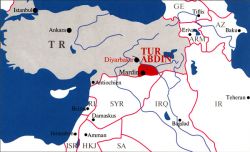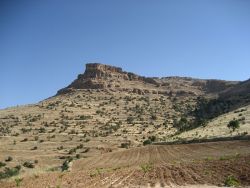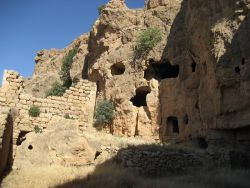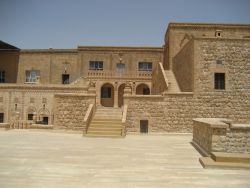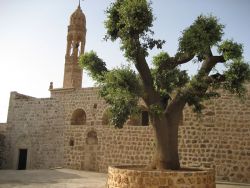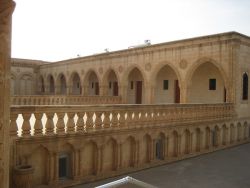Reflections on a recent trip to Tur Abdin
Christians and monks in southeast Turkey
June 2010
Brother Sabino last month has spent two weeks in the region of Tur Abdin where he lived a true experience of communion with the Christians, in particular with the monks living there.
Tur Abdin, “the mountain of adorers”, a plateau in southeastern Turkey, historic heart of Syriac Christianity, is as if set between two cities that were the centers for the diffusion of this ancient Christian tradition. Not far to the west is the ancient Edessa, today ?anliurfa, the propelling center of the Christianity that took over its language, a variety of Aramaic known as “Syriac”, thus giving life to a new and fruitful expression of “Semitic” Christianity. This was the city of Ephrem’s famous theological school, which for centuries was a breeding ground of culture and religious thought. Very close to the south is Nisibi (Nusaybin), the first seat of Ephrem’s theological school, which afterwards became the heart of that part of Syriac Christianity that became the Eastern Syriac Church, the Church of the Persians.
Just in back of the two large and fertile cities of the plain there is a mountainous and secluded hinterland sprinkled with small towns, villages, and numerous monastic settlements. It is these last that have given it its name. Even today, in fact, Tur Abdin, as well as Mount Izla or Izlo, which constitutes its southernmost part, is remembered for its numerous West Syriac and East Syriac ascetics who lived, prayed, and struggled there. It is a kind of Syriac “Mount Athos”, as is often said, and the comparison is far from being out of place, considering the high number of monasteries that are known.
What, however, remains of this? There are countless remains, especially of churches or caves inhabited by solitaries and cenobitic monks. There remain the reflections of the spiritual experience lived by those solitaries in the numerous jewels of Syriac literature that have escaped destruction and abandonment and have come down to us: Afraat, Ephrem, Jacob of Sarug, Filoxenes, Isaac of Niniveh, John of Dalyata, and others.
- 1
- 2
